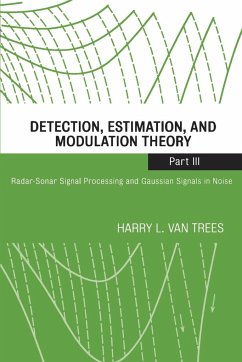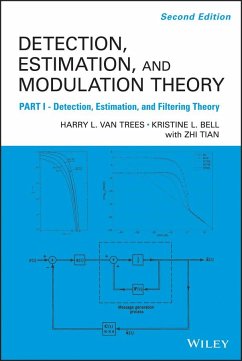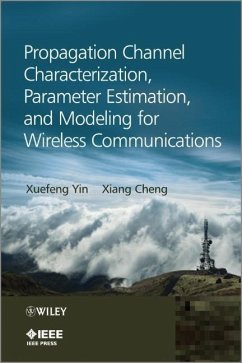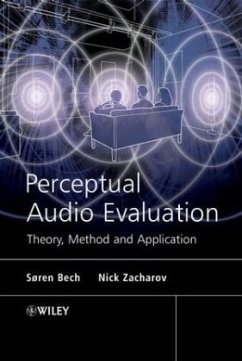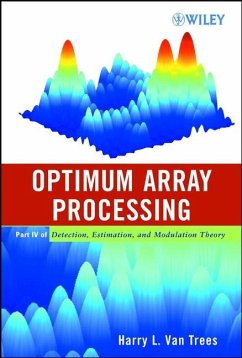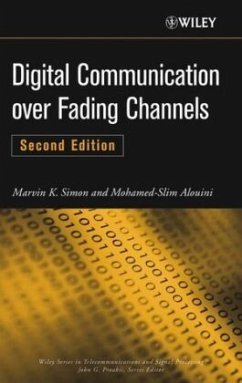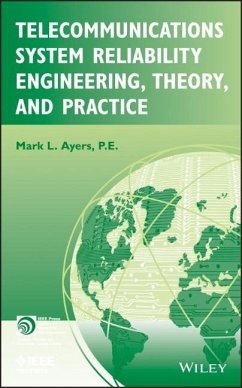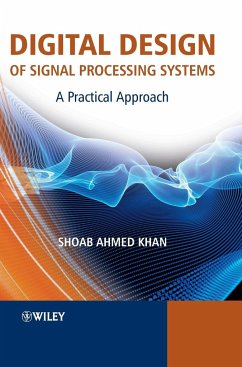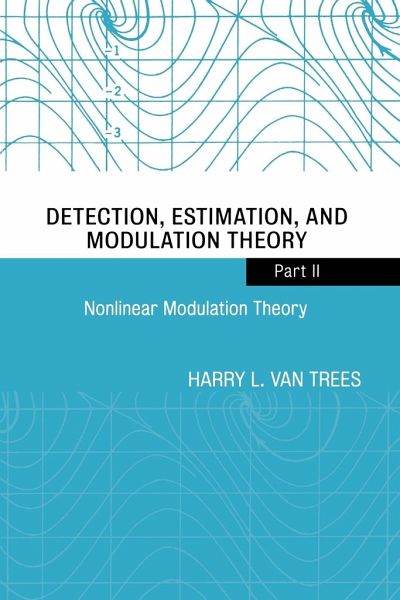
Detection, Estimation, and Modulation Theory, Part II
Nonlinear Modulation Theory
Versandkostenfrei!
Versandfertig in über 4 Wochen
144,99 €
inkl. MwSt.

PAYBACK Punkte
72 °P sammeln!
Nonlinearity is the behavior of a circuit, particularly an amplifier, in which the output signal strength does not vary in direct proportion to the input signal strength. In a nonlinear device, the output-to-input amplitude ratio depends on the strength of the input signal. Due to the many factors that interfere with a signal, nonlinear systems are more common place. This is a paperback conversion of the author's best-selling classic.
The respected classic, now in a handy paperback edition
Originally published in 1971, Harry Van Trees' Detection, Estimation, and Modulation Theory, Part II is one of the classic references in the area of nonlinear modulation theory and analog communication. Highly readable and well organized, it is as valuable today for professionals, researchers, and students interested in the estimation of continuous waveforms as it was over thirty years ago.
Part II focuses on the problem of finding the optimum estimate of a waveform which is embedded in a signal in a nonlinear manner. The following topics are covered in detail:
_ Bayesian Cramér-Rao bound on the mean-square estimation error
_ Optimum demodulators for frequency-modulation systems
_ Phase estimation: the synchronization problem
_ Fokker-Planck techniques for nonlinear analysis in the presence of noise
_ Optimum angle-modulation systems
_ Rate distortion bounds for analog message transmission
_ Analog communication over randomly time-varying channels
_ State variable analysis procedures
For students in signal processing or professionals looking for a reliable refresher on waveform estimation, Detection, Estimation, and Modulation Theory, Part II provides authoritative, practical coverage by one of the most renowned figures in the field. Although most current systems are implemented digitally, the bounds on performance developed in Part II are still applicable.
Originally published in 1971, Harry Van Trees' Detection, Estimation, and Modulation Theory, Part II is one of the classic references in the area of nonlinear modulation theory and analog communication. Highly readable and well organized, it is as valuable today for professionals, researchers, and students interested in the estimation of continuous waveforms as it was over thirty years ago.
Part II focuses on the problem of finding the optimum estimate of a waveform which is embedded in a signal in a nonlinear manner. The following topics are covered in detail:
_ Bayesian Cramér-Rao bound on the mean-square estimation error
_ Optimum demodulators for frequency-modulation systems
_ Phase estimation: the synchronization problem
_ Fokker-Planck techniques for nonlinear analysis in the presence of noise
_ Optimum angle-modulation systems
_ Rate distortion bounds for analog message transmission
_ Analog communication over randomly time-varying channels
_ State variable analysis procedures
For students in signal processing or professionals looking for a reliable refresher on waveform estimation, Detection, Estimation, and Modulation Theory, Part II provides authoritative, practical coverage by one of the most renowned figures in the field. Although most current systems are implemented digitally, the bounds on performance developed in Part II are still applicable.



